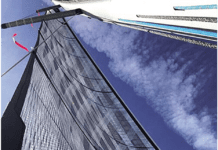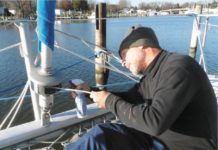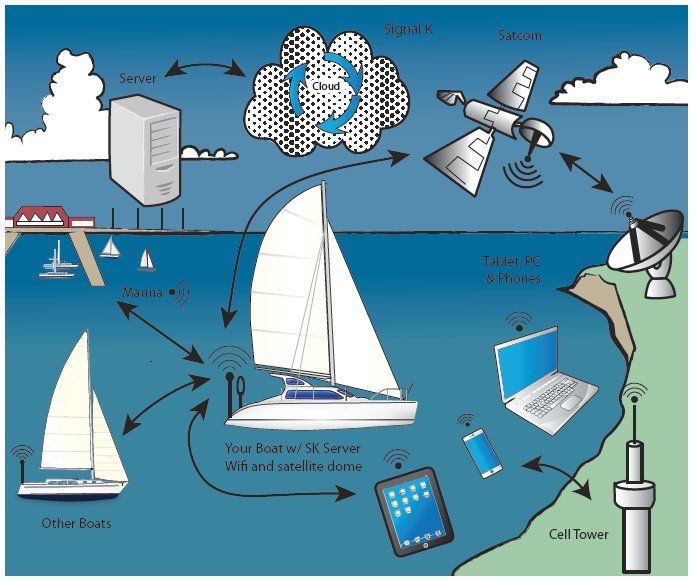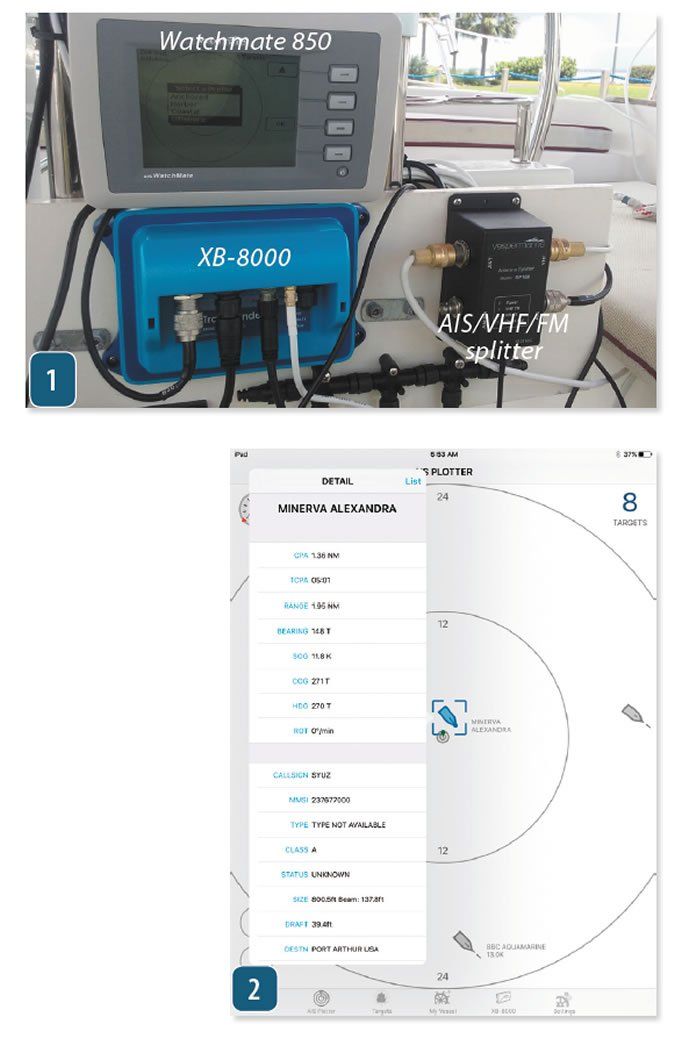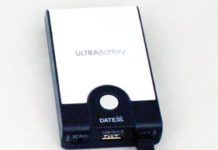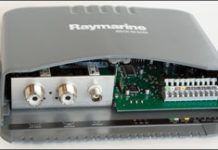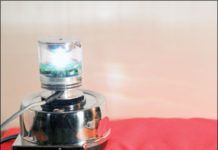Testing Smart Phones at Sea
Practical Sailor tests a cross-section of PDAs, pocket PCs, and smart phones between $100 and $800. Palm OS and Windows Mobile software were included. Readability, functionality and practical application were foremost considerations. Reliability, weather resistance, and batteries were also considered. We evaluated Palm Phones Palm Treo, Hewlett Packard iPAQ, Palm PDA Palm TX, Active Captain MobileSource, Memory Map Navigator, and Ozi Explorer CE. Testers compared the mobile devices to a handheld GPS specifically designed for navigation, the Garmin Oregon 400C.
Stocking Stuffers For Sailors
Its hard to believe, but the 2009 holiday season is upon us. As is custom, Practical Sailor editors have put together a varied roundup of gifts to stuff those stockings more likely to hang from a bulkhead than the mantle. For the racing or small-boat sailor whos making the leap from wire rope to high-tech fiber, Colligo Marines Softies offer a lightweight alternative to traditional steel shackles and headsail hanks. Made of extra strong and chafe-resistant Dyneema, the "soft" hardware is the perfect solution for use with synthetic forestays, and unlike metal hanks, theyll never leave rust stains on sails. Using the Softies is as easy as pulling the shake-resistant knot through the expandable spliced loop, then sliding the slip ring (rubber O-rings) up to the knot. A lanyard ensures easy opening, but the self-tightening O-rings offer added security against accidental opening or shaking loose.
PS Advisor: Safe Mounting for Radar
I am looking at antenna mounting options for my 2.2-kilowatt radar. I like the idea of keeping the antenna out of the foretriangle and its sail and rigging, but am a little concerned about crew exposure by mounting the antenna aft on a pole or lower on the backstay. The manufacturer (Furuno) mentions nothing about exposure hazards in its installation manual. Does a hazard exist in this configuration?
Top-of-the-Line VHFs Packed with Multi-function Features
The fixed-mount marine VHF radios tested for this review go beyond the basic capabilities of moderately priced VHFs. The waterproof VHFs include features such as integral high-wattage hailers, multiple remote microphone connections, and the capability to store MMSI numbers. They also meet Class D standards for DSC functions, with two separate receivers-one for voice communications and a second to continuously monitor channel 70 for DSC calls. The five VHF radios tested were the Icom M504, Icom M604, Standard Horizon GX5000S, Standard Horizon GX5500S, and the Raymarine 218.
Practical Sailor Tests AIS Class B Transceivers from West Marine and Navico
Practical Sailor last looked at Automatic Identification Systems, or AIS, in November 2008, reviewing the Raymarine AIS250, a receive-only device. Since that report, the pool of AIS products has grown to include several affordable transceiver options for recreational sailors. In this head-to-head test, we review two AIS-Class B devices capable of sending and receiving AIS data: the Navico NAIS-300 and the West Marine AIS1000. AIS transceivers are split into Class A (commercial) and Class B (recreational). AIS devices improve safety at sea by receiving and broadcasting a wide variety of information about a ship, including its name, latitude and longitude, course over ground, speed over ground, heading, status, and Maritime Mobile Service Identity (MMSI) number.
Feature-loaded High-end Marine Handheld VHF Radios
Practical Sailor tested eight high-end marine handheld VHFs from three manufacturers: Cobra, Standard Horizon, and Uniden. Among those tested were two updated Standard Horizon VHFs, the HX500S-LI and HX600S-LI, and three of the companys latest floating VHF radios, the HX750S, HX760S, and HX850S. From Uniden, testers evaluated the MHS450 and MHS550. They also tested the Cobra HH425 LI. These feature-rich handheld marine radios, priced from $130 to $350, were tested for transmitter power, frequency accuracy, frequency stability, receiver sensitivity, audio output, and audio quality. They also were submerged in fresh water, dropped from 4 feet onto concrete and batteries were left on for 15 hours to test battery life.
The Search for Reliable Hands-free Onboard Communication Systems
Being able to communicate with a hands-free communication device along the length of the deck allows crew to coordinate activities like anchoring, docking, and going up the mast. Practical Sailor testers experimented with two systems: Motorola SX800R two-way radios and Nautic Devices Yapalong 3000. Both the Motorola and the Yapalong comprise a cell-phone-sized transmitter/radio unit and a separate handset. We tested them during anchoring, masthead repairs, and docking. The products were used with their mated headsets in various weather and sea conditions, including light rain and spray. The Motorola unit also was tested with a compatible Fire Fox Sportsman Throat Mic.
PS Advisor: DSC Group Identity Numbers
I’m a member of the Stonington Harbor Yacht Club in Stonington, Conn., and we need a better way to contact members on the water. We would like to use the full features of DSC (Digital Selective Calling) group calling for that purpose, but it is not clear to us what the best way is to obtain a group identity call number for DSC calls.
Budget-friendly Handheld and Fixed-mount VHF Radios
As a follow up to Practical Sailors recent marine electronics report on mid-priced VHF radios, we evaluated three entry-level fixed-mount VHFs and three entry-level handheld VHFs priced at about $100. Marine radios in this price range lack some of the bells-and-whistles and safety features of higher-priced VHFs, but they will suit the needs of sailors on a budget or boaters looking for a backup VHF. The three fixed VHF radios tested were Cobra Marine F55, the Midland Regatta I and the Standard Horizon Eclipse GX1000S. Handheld radios tested were the Cobra MR HH325 VP, Midland Nautico NT3, and West Marine VHF55. Testers evaluated each radios transmitter, receiver, sound quality, display screen, and water resistance. Radio performance was also tested at extreme temperatures, and handheld models were dropped from 4 feet onto a concrete surface.
Signal Mate Review
Compliance is signaling in restricted visibility. This is why we became interested in Signal Mate and its approach to automating sound and light signaling, a big plus for short-handed sailors. The companys console-mount controller and its portable emergency signaling kit offer great capability and quite a bit more. The easy-to-operate push-button console actuates digital switching circuitry that controls light, and sound signals are pre-programmed to indicate anchoring and making way in low visibility, as well as designating emergency and distress situations. Theres also a capacity to manually control the signaling process, and to select sound, light, or both as signaling options. The unit can connect to the boat horn or other audible device or can be wired to a mast-mounted maneuvering light.













